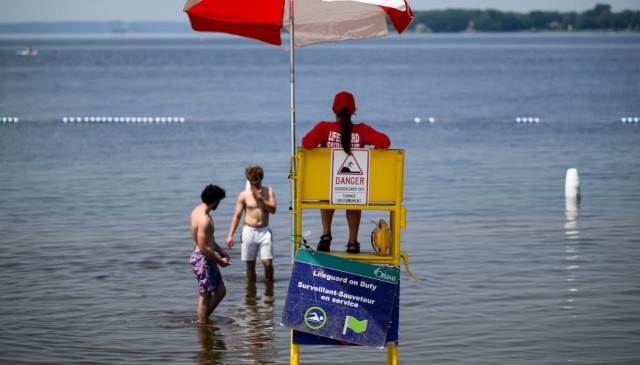
A study suggests climate change will drive a massive shift in the the birds, bugs and other critters that live alongside humans in 60 cities across North America. THE CANADIAN PRESS/Adrian
A recent study suggests that climate change will significantly impact the mix of urban wildlife that people have become accustomed to. The research, led by Alessandro Filazzola from the University of Toronto's Centre for Urban Environments and published in the journal PLOS One, indicates that the nature individuals interact with in their everyday lives, such as in their backyard, is subject to change due to climate shifts.
Filazzola conducted a simulation using data from eight different climate models and an extensive dataset detailing sightings of 2,019 species from 60 cities across North America. This approach allowed researchers to estimate the current prevalence and distribution of each species and predict how climate change factors such as temperature and precipitation could affect their future.
The study suggests that cities with temperate climates, like those in Canada, may see an influx of new species by the end of the century. Cities such as Ottawa, Edmonton, and Quebec City could become hospitable environments for hundreds of new species while losing habitat for some existing ones. Quebec City, in particular, is projected to accommodate over 500 new species due to slightly warmer temperatures and shifts in precipitation patterns.
However, the study also highlights that widespread species, such as raccoons, are less likely to be affected by climate change and may even thrive in urban environments. Conversely, localized species, which are only found in a few cities, are at greater risk of losing their habitat.
Insect populations are expected to see significant changes, with various species of centipedes, butterflies, spiders, and cockroaches potentially appearing in new areas. Meanwhile, the distribution of songbirds and foxes is predicted to decline, while pelicans and certain types of lizards may become more prevalent.
Cities in the southeastern United States, such as Atlanta, are anticipated to be the most affected by species loss according to the study.
Filazzola acknowledges that the study's projections may not unfold precisely as predicted, as other factors besides climate also influence species distribution. However, he emphasizes the inevitability of change and urges recognition of the importance of urban biodiversity.
The potential transformation of urban wildlife has implications for various services reliant on the environment, including pest control. Moreover, it may alter individuals' relationship with their surroundings, as the sounds and sights of familiar wildlife could evolve over time.
Ultimately, the study underscores the dynamic nature of urban ecosystems and the need for proactive measures to mitigate the impact of climate change on urban wildlife. As cities continue to evolve, understanding and adapting to these changes will be essential for promoting biodiversity and fostering sustainable urban environments.















